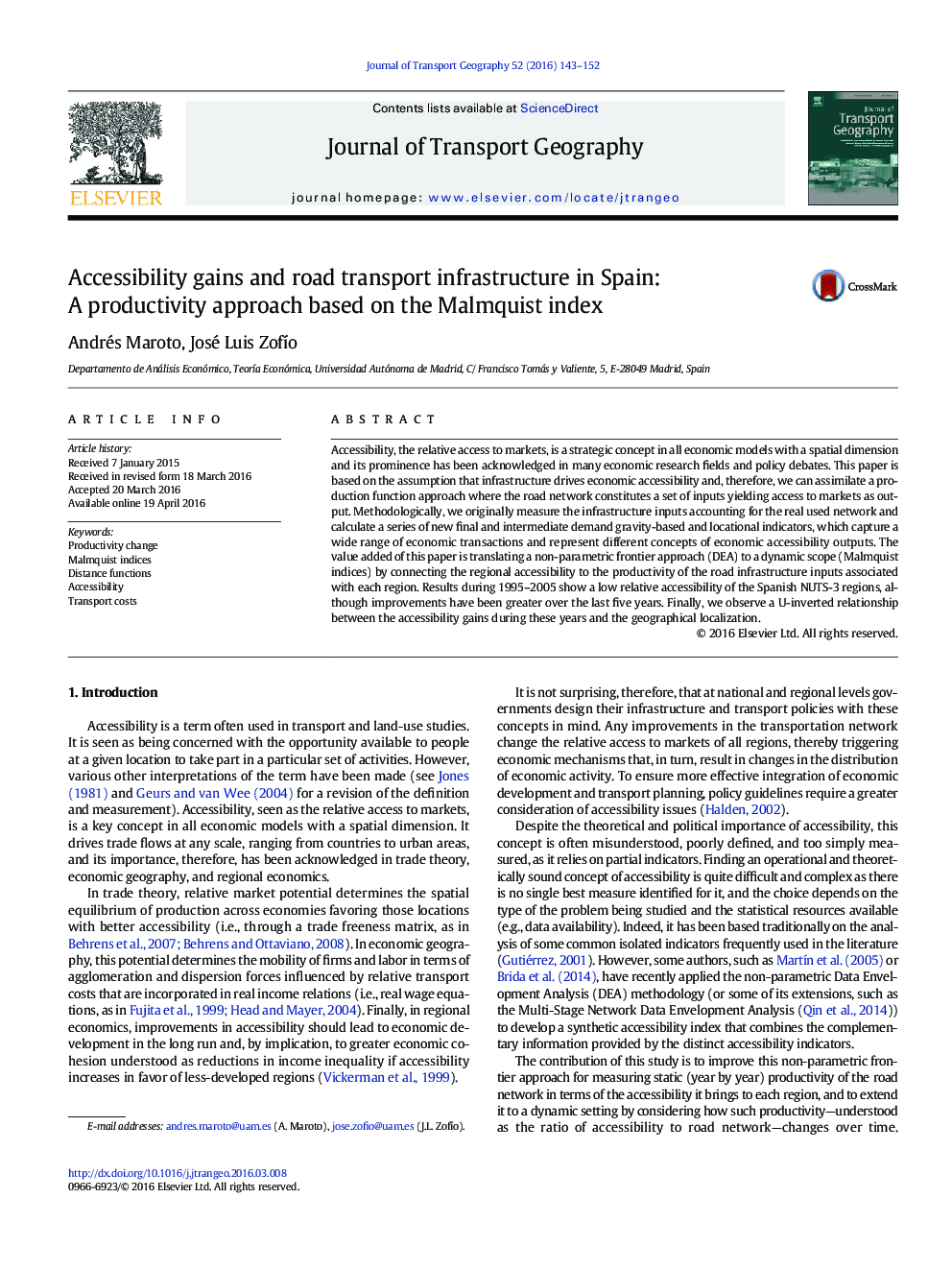| Article ID | Journal | Published Year | Pages | File Type |
|---|---|---|---|---|
| 7485495 | Journal of Transport Geography | 2016 | 10 Pages |
Abstract
Accessibility, the relative access to markets, is a strategic concept in all economic models with a spatial dimension and its prominence has been acknowledged in many economic research fields and policy debates. This paper is based on the assumption that infrastructure drives economic accessibility and, therefore, we can assimilate a production function approach where the road network constitutes a set of inputs yielding access to markets as output. Methodologically, we originally measure the infrastructure inputs accounting for the real used network and calculate a series of new final and intermediate demand gravity-based and locational indicators, which capture a wide range of economic transactions and represent different concepts of economic accessibility outputs. The value added of this paper is translating a non-parametric frontier approach (DEA) to a dynamic scope (Malmquist indices) by connecting the regional accessibility to the productivity of the road infrastructure inputs associated with each region. Results during 1995-2005 show a low relative accessibility of the Spanish NUTS-3 regions, although improvements have been greater over the last five years. Finally, we observe a U-inverted relationship between the accessibility gains during these years and the geographical localization.
Keywords
Related Topics
Life Sciences
Environmental Science
Environmental Science (General)
Authors
Andrés Maroto, José Luis ZofÃo,
